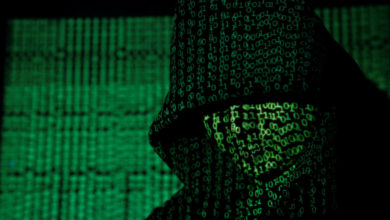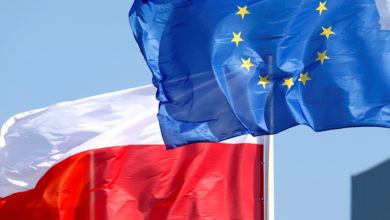Russian Invasion Slows in the Face of Fierce Ukrainian Resistance

(KYIV, Ukraine) — Russia unleashed a wave of attacks on Ukraine targeting airfields and fuel facilities in what appeared to be the next phase of an invasion that has been slowed by fierce resistance. USA and EU responded to this invasion with ammunition and weapons for outnumbered Ukrainians, as well as strong sanctions designed to isolate Moscow.
Large explosions erupted in the skies early Sunday in the capital Kyiv. Residents hunkered down at their homes, underground garages, and subway stations, in preparation for a large-scale attack by Russian forces.
Flames billowed into the sky before dawn from an oil depot near an air base in Vasylkiv, where there has been intense fighting, according to the town’s mayor. President Volodymyr Zelenskyy’s office said another explosion was at the civilian Zhuliany airport.
[time-brightcove not-tgx=”true”]
Zelenskyy’s office also said Russian forces blew up a gas pipeline in Kharkiv, the country’s second-largest city, prompting the government to warn people to protect themselves from the smoke by covering their windows with damp cloth or gauze.
“We will fight for as long as needed to liberate our country,” Zelenskyy vowed.

Women, children, and men in fear fled for safety indoors and underground. To keep them off the streets, the government established a 39-hour curfew. Over 150,000 Ukrainians fled Ukraine for Poland, Moldova, or other countries nearby. The United Nations said that the number could reach 4 million, if violence escalates.
President Vladimir Putin hasn’t disclosed his ultimate plans, but Western officials believe he is determined to overthrow Ukraine’s government and replace it with a regime of his own, redrawing the map of Europe and reviving Moscow’s Cold War-era influence.
To aid Ukraine’s ability to hold out, the U.S. pledged an additional $350 million in military assistance to Ukraine, including anti-tank weapons, body armor and small arms. Germany stated that it will send anti-tank and missile weapons to Ukraine and would also close its airspace for Russian aircraft.
The U.S., European Union and United Kingdom agreed to block “selected” Russian banks from the SWIFT global financial messaging system, which moves money around more than 11,000 banks and other financial institutions worldwide, part of a new round of sanctions aiming to impose a severe cost on Moscow for the invasion. They also agreed to impose ”restrictive measures” on Russia’s central bank.
Responding to a request from Ukraine’s minister of digital transformation, tech billionaire Elon Musk said on Twitter his satellite-based internet system Starlink was now active in Ukraine and that there were “more terminals en route.”
Uncertain how large a territory Russian forces had taken or whether their advance was stalled. Britain’s Ministry of Defense said “the speed of the Russian advance has temporarily slowed likely as a result of acute logistical difficulties and strong Ukrainian resistance.”
A senior U.S. defense official said more than half the Russian combat power that was massed along Ukraine’s borders had entered the country and Moscow has had to commit more fuel supply and other support units inside Ukraine than originally anticipated. An official speaking on condition of anonymity was requested to talk about internal U.S. assessment.

Through Monday morning, the curfew that forced everyone to stay inside Kyiv was in effect. Gunfire broke up the calm in parts of the capital.
Fighting on the city’s outskirts suggested that small Russian units were trying to clear a path for the main forces. Small groups of Russian troops were reported inside Kyiv, but Britain and the U.S. said the bulk of the forces were 19 miles (30 kilometers) from the city’s center as of Saturday afternoon.
Russia asserts that its attack on Ukraine from the east, north and south is only directed at military targets. However, bridges and schools have been damaged.
Ukraine’s health minister reported Saturday that 198 people, including three children, had been killed and more than 1,000 others wounded during Europe’s largest land war since World War II. The exact number of civilian and military casualties was not known.
A missile struck a high-rise apartment building in Kyiv’s southwestern outskirts near one of the city’s two passenger airports, leaving a jagged hole of ravaged apartments over several floors. Six civilians sustained injuries, according to a rescue worker.
Ukraine’s ambassador to the U.S., Oksana Markarova, said troops in Kyiv were fighting Russian “sabotage groups.” Ukraine says some 200 Russian soldiers have been captured and thousands killed.
Markarova stated that Ukraine had evidence of the shelling of homes, kindergartens, and hospitals in order to present to The Hague possible crimes against humanity.
Zelenskyy reiterated in a message his willingness to talk with Russia. He said that he welcomes an offer from Turkey to help organize diplomatic efforts.
While the Kremlin acknowledged that Putin had called Ilham Aliyev, President of Azerbaijani Azerbaijani, but did not mention a restart of talks, Zelenskyy had offered to help negotiate with Russia a crucial demand, abandoning NATO ambitions.
Putin sent troops into Ukraine after denying for weeks that he intended to do so, all the while building up a force of almost 200,000 troops along the countries’ borders. He claims the West has failed to take seriously Russia’s security concerns about NATO, the Western military alliance that Ukraine aspires to join. But he has also expressed scorn about Ukraine’s right to exist as an independent state.
This effort already came at a great price to Ukraine and, apparently, to Russian forces.
Ukrainian artillery destroyed the Russian diesel train carrying troops from the east to Kyiv, according to Anton Gerashchenko, an advisor to the interior ministry.
The country’s Infrastructure Ministry said a Russian missile was shot down early Saturday as it headed for the dam of the sprawling reservoir that serves Kyiv. According to the government, a Russian convoy had been destroyed. Video images showed soldiers inspecting burned-out vehicles after Ukraine’s 101st brigade reported destroying a column of two light vehicles, two trucks and a tank. It was impossible to verify the claim.
From the east, highways leading to Kyiv were lined with checkpoints that were manned by Ukrainian soldiers and civilians wearing civilian clothes who carried automatic rifles. Although it wasn’t clear if these were Russian or Ukrainian, low-flying aircraft patrolled the skies.
In addition to Kyiv, the Russian assault appeared to focus on Ukraine’s economically vital coastal areas, from near the Black Sea port of Odesa in the west to beyond the Azov Sea port of Mariupol in the east.
Mariupol saw Ukrainian soldiers protect bridges, and block people from shorelines amid worries that Russia could attack the coast.
“I don’t care anymore who wins and who doesn’t,” said Ruzanna Zubenko, whose large family was forced from their home outside Mariupol after it was badly damaged by shelling. “The only important thing is for our children to be able to grow up smiling and not crying.”
Two territories in eastern Russia, which are controlled by prorussian separatists, saw fighting. Donetsk officials stated that water supplies for the approximately 900,000. population were cut off due to damage caused by Ukrainian shelling.
According to an American intelligence officer with direct knowledge, the U.S. government tried to convince Zelenskyy to leave Kyiv on Saturday morning. However, he declined the request. Zelenskyy made a defiant video on a downtown street and stated that he was still in the city.
“We aren’t going to lay down weapons. We will protect the country,” he said. “Our weapon is our truth, and our truth is that it’s our land, our country, our children. And we will defend all of that.”
Both Poland and Hungary opened their borders for Ukrainians.
According to refugees arriving at Zahony, a Hungarian border settlement in Zahony, men aged between 18 and 60 are not allowed to leave Ukraine.
“My son was not allowed to come. My heart is so sore, I’m shaking,” said Vilma Sugar, 68.
At Poland’s Medyka crossing, some said they had walked for 15 miles (35 kilometers) to reach the border.
“They didn’t have food, no tea, they were standing in the middle of a field, on the road, kids were freezing,” Iryna Wiklenko said as she waited on the Polish side for her grandchildren and daughter-in-law to make it across.
Officials from Kyiv advised residents not to open windows in order to prevent bullets or debris.
At pharmacies and grocery shops, shelves were not well stocked. People worried about the shelf life of food and medicines.
The U.S. and its allies have beefed up forces on NATO’s eastern flank but so far have ruled out deploying troops to fight Russia. The United States, Europe and other countries have placed broad-reaching sanctions against Russia. They are now preventing individuals and businesses from accessing their assets, including Putin’s foreign minister.
Dmitry Medvedev, the deputy head of Russia’s Security Council, warned that Moscow could react by opting out of the last remaining nuclear arms pact, freezing Western assets and cutting diplomatic ties.
“There is no particular need in maintaining diplomatic relations,” Medvedev said. “We may look at each other in binoculars and gunsights.”
___
Isachenkov reported in Moscow from Miller’s Washington. Francesca Ebel in Kyiv and Josef Federman in Washington; Mstyslav Chenov and Nic Dumitrache, both in Mariupol in Ukraine; as well as other AP journalists worldwide, contributed to the report.





